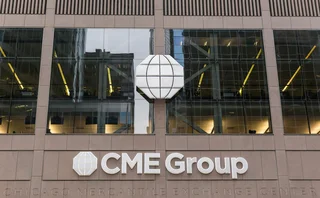
G30 proposes major clearance reforms and emphasises risk issues
The Group of Thirty (G30), an association of private and central bankers, today issued an ambitious blueprint for a reform of the global securities clearing and settlement system. The initiative comprises 20 recommendations, designed to reduce investor costs and strengthen market efficiency for the international clearance and settlement of securities.
“Given [the] rapid growth of debt, equity and derivatives trading, the wrong combination of market shocks and financial dislocations might be sufficient to overtax the infrastructure on which the functioning global markets depend,” said Andrew Large, deputy chairman of the Bank of England and chairman of the G30 committee that has researched clearing and settlement issues for the past two years. "We are talking about the central nervous system of global finance, whose health is of vital economic significance.”
The G30 risk recommendations called for financial institutions to reinforce their risk management practices by establishing robust due diligence and counterparty risk management controls. Banks should also regularly review and test business continuity and disaster recovery plans. “Market participants should ensure that master agreements provide that upon the early termination of a transaction, or group of transactions, the determining party will have the flexibility to value such transactions by the method that is most likely to produce a commercially reasonable valuation at the time of termination,” the G30 report said.
Effectively, the G30 wants to encourage the world’s major private and central banks to develop a more integrated cross-border clearing and settlement system – much like Continuous Linked Settlement (CLS), the new industry initiative to cut settlement risk for foreign exchange, which went live late last year.
The G30 said its reforms will reap benefits for market participants, which currently have to contend with a myriad of clearing and settlement systems when conducting cross-border trades. Because of the five- to seven-year timeframe, the costs of implementing new technologies would not be prohibitive, as it is in keeping with the normal replacement cycles for systems and software, Large said.
Also speaking at the press conference at the Bank of England in London this morning, David Walker, G30 treasurer and senior advisor for Morgan Stanley in London, said securities trading in Europe, for example, typically involves around 20 different clearing and settlement models. As a result, an efficient system is now more urgently required than it ever was with the foreign exchange market, due to the range of asset classes involved, Walker added.
Only users who have a paid subscription or are part of a corporate subscription are able to print or copy content.
To access these options, along with all other subscription benefits, please contact info@risk.net or view our subscription options here: http://subscriptions.risk.net/subscribe
You are currently unable to print this content. Please contact info@risk.net to find out more.
You are currently unable to copy this content. Please contact info@risk.net to find out more.
Copyright Infopro Digital Limited. All rights reserved.
As outlined in our terms and conditions, https://www.infopro-digital.com/terms-and-conditions/subscriptions/ (point 2.4), printing is limited to a single copy.
If you would like to purchase additional rights please email info@risk.net
Copyright Infopro Digital Limited. All rights reserved.
You may share this content using our article tools. As outlined in our terms and conditions, https://www.infopro-digital.com/terms-and-conditions/subscriptions/ (clause 2.4), an Authorised User may only make one copy of the materials for their own personal use. You must also comply with the restrictions in clause 2.5.
If you would like to purchase additional rights please email info@risk.net
More on Risk management
How a serverless risk engine transformed a digital bank
Migrating to the cloud permitted scalability, faster model updates and a better team structure
During Trump turbulence, value-at-risk may go pop
Trading risk models have been trained in quiet markets, and volatility is now looming
Osttra to launch Treasury clearing middleware
Mid-year delivery expected for system that aids credit checking for repo trades
Banks divided over CME’s done-away model for UST clearing
Buy side could give thumbs-up if questions on margin protection and guarantee fees are answered
Why JP Morgan’s Santos wants to make bad news travel fast
Asset management CRO says sharing information early holds the key to avoiding surprises
Mitigating model risk in AI
Advancing a model risk management framework for AI/machine learning models at financial institutions
BoE warns over risk of system-wide cyber attack
Senior policy official Carolyn Wilkins also expresses concern over global fragmentation of bank regulation
Treasury clearing timeline ‘too aggressive’ says BofA rates head
Sifma gears up for extension talks with incoming SEC and Treasury officials







